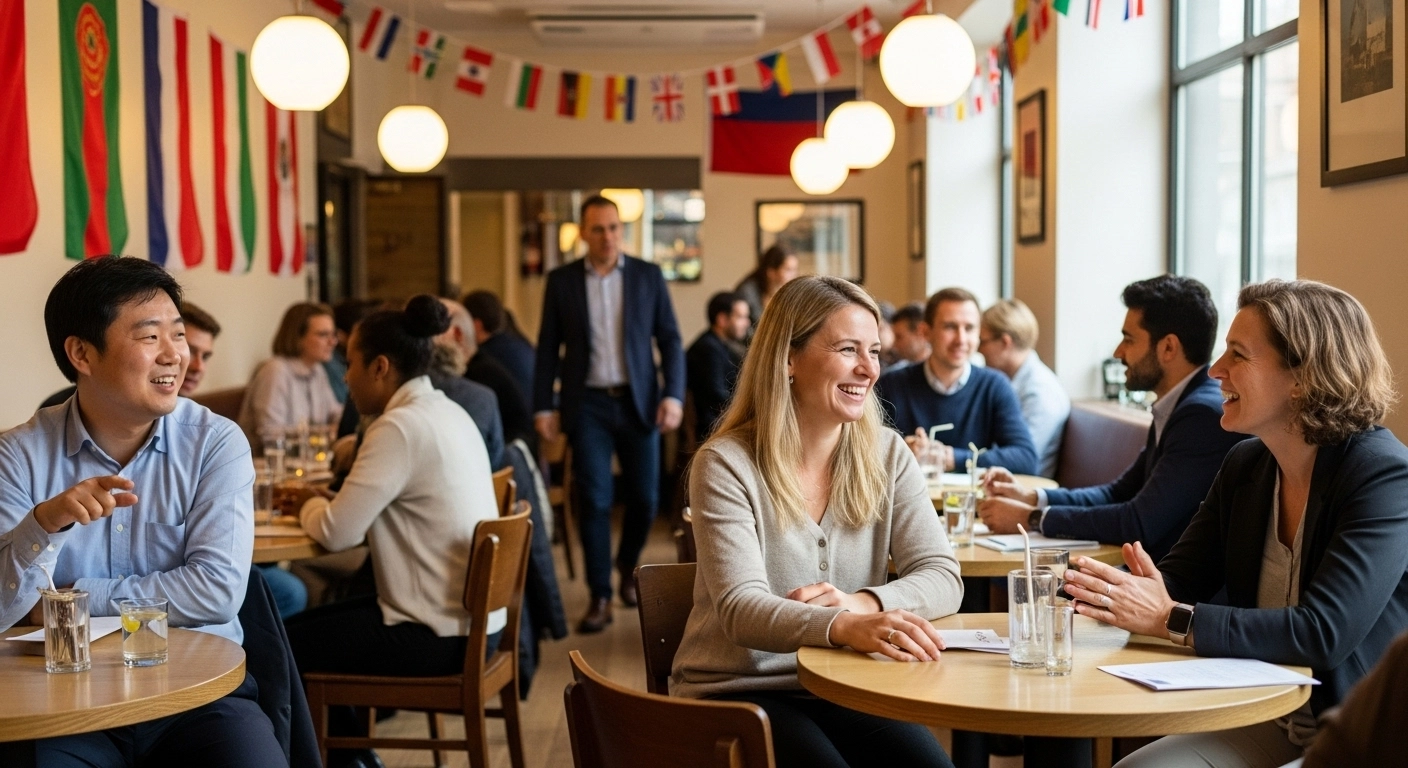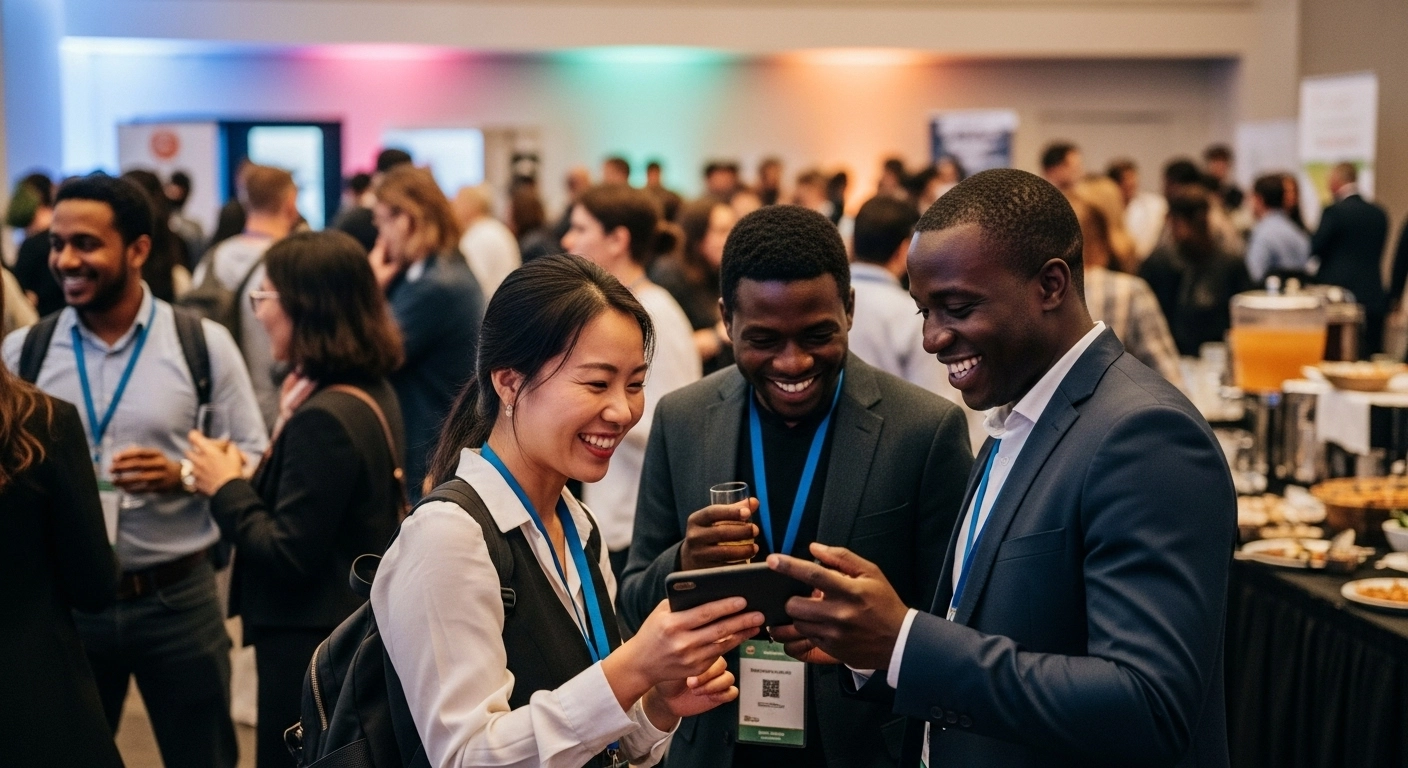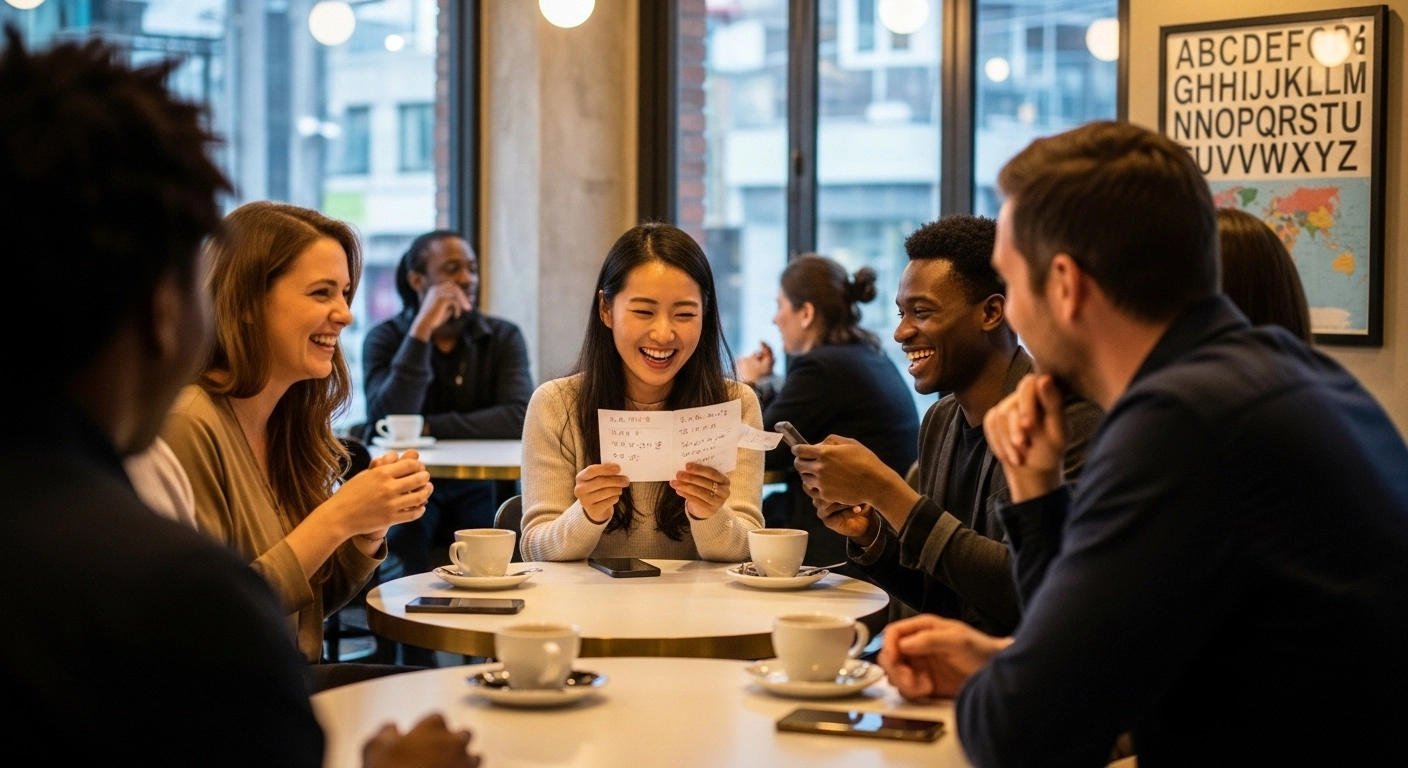Key Takeaway: As of October 2025, the global Korean language learning market has grown to $720 million, with AI-powered language exchange Korean learning platforms and 10-minute conversation parties emerging as the hottest new trends. Discover practical methods to boost your speaking confidence through real-time language exchange with native speakers.
1. Language Exchange Korean Learning Trends 2025
Korean has become one of the fastest-growing languages to learn worldwide. The global Korean language learning market reached $720 million in 2024 and is projected to grow at an annual rate of over 15% through 2034.
The explosive popularity of K-POP and Korean dramas has driven unprecedented demand for Korean language education. When BLACKPINK’s Lisa confirmed her appearance in an HBO series in March 2025, it further accelerated the global expansion of the Korean entertainment industry.
What’s particularly remarkable is that over 200,000 students across 47 countries now study Korean as part of their formal education curriculum. Germany’s Carolinum Middle School became the first in Western Europe to include Korean in its official curriculum in 2021, and starting in 2025, Hong Kong began accepting TOPIK scores as a second foreign language for university entrance exams.
Why Language Exchange Is Getting Attention
Unlike traditional classroom instruction or textbook-based learning, language exchange Korean learning allows you to naturally acquire the language through real conversations. Research from the University of Wisconsin-Madison has proven that language learners who practice speaking outperform those who focus solely on comprehension.
1. The online language learning market is expected to grow from $21.1 billion in 2025 to $44.4 billion by 2030.
2. AI-powered language learning tools improve student performance by 50% compared to traditional methods.
3. Interactive learning platforms have reduced student dropout rates by 35%.

2. Language Exchange Korean Learning – The Power of 10-Minute Conversation Parties
10-minute conversation parties are a language exchange method where participants engage in intensive conversations for short periods. This approach applies microlearning principles by breaking complex topics into specific 5-10 minute chunks to maximize learning efficiency.
Core Principles of 10-Minute Conversation Parties
This method enhances learning effectiveness by practicing real conversations during the short period when concentration is at its peak. At language exchange meetups held every evening in Seoul’s Gangnam and Hongdae districts, participants typically rotate tables every 30-40 minutes to chat with new people.
1. Start a new topic every 10 minutes to prevent boredom.
2. Short-burst concentration reduces speaking anxiety and builds confidence.
3. Meeting diverse conversation partners exposes you to various accents and expressions.
Benefits of Online and Offline Conversation Parties
As of 2025, language exchange meetups are actively happening both online and offline. Through platforms like Meetup, GlobalSeoulMates, and HiLocal, large gatherings with 25-35 participants take place regularly every week.
Online conversation parties offer the advantage of participating regardless of time and location. Video language exchanges using Zoom or Google Meet allow you to connect with native speakers from anywhere in the world.
3. Practical Language Exchange Korean Learning Methods
Learning Korean through language exchange isn’t just about memorizing grammar and vocabulary—it’s about developing the ability to use the language naturally in real conversation situations.
Preparing for Effective Language Exchange
Preparation is key to successful language exchange. When you decide on conversation topics in advance and prepare commonly used expressions, you’ll speak much more confidently in practice.
1. Start with basic topics like self-introduction, hobbies, and daily life.
2. Prepare questions about Korean culture to encourage natural conversation.
3. Take notes on unfamiliar expressions and always review them after the conversation.
How to Use Table Rotation
The table rotation system adopted by many language exchange meetups involves changing seats every 40 minutes to an hour to chat with new people. At Seoul’s representative language exchange gatherings, participants are typically 30% foreigners and 70% Koreans, with 4-6 people seated at each table.
The biggest advantage of this method is experiencing diverse conversation styles. Some people speak slowly, while others speak quickly. This diversity is essential for building real-world language skills.

4. Using AI-Integrated Language Exchange Platforms
The biggest change in language learning in 2025 is the integration of AI technology. AI tutors correct pronunciation, intonation, and grammar in real-time, with pronunciation correction accuracy exceeding 95%.
Major AI Language Exchange Platforms
Duolingo doubled its catalog in January 2025 by launching 148 new language courses powered by generative AI. Speak raised $100 million in Series C funding at a $7.8 billion valuation to expand its AI conversational learning.
1. Duolingo: Provides gamified learning systems and AI chatbot conversation features
2. Talkpal: Real-time conversation-focused platform enabling direct communication with native speakers
3. HelloTalk: Social network-style app connecting learners with native speakers for language exchange
4. Speakly: After learning the statistically most relevant 4,000 words, practice real conversations
The Effectiveness of Hybrid Learning
The hybrid learning market combining online digital resources with real-time face-to-face instruction reached $289.7 million in 2024. The most effective approach is building foundations with an AI tutor and gaining practical experience at actual language exchange meetups.
Practicing conversations with an AI tutor for 10 minutes daily can help you develop natural speaking patterns within six months. According to actual user reviews, although initial pronunciation recognition rates were frustratingly low, motivation increased as the AI’s accuracy gradually improved.
5. Global Language Exchange Community Participation Guide
Language exchange is more than just learning a language—it’s a precious opportunity to make friends worldwide and exchange cultures. As of 2025, group language exchange meetups are held every evening in Seoul’s Gangnam and Hongdae areas.
Representative Language Exchange Communities
GlobalSeoulMates (HiLocal) hosts language exchange meetups, pub parties, and Korean language education in their dedicated GSM Terrace space. Participants receive two free drinks and can freely choose from coffee to beer and cocktails.
1. HiLocal: Regular meetups held every evening in Gangnam and Hongdae
2. Meetup Language Exchange Groups: MNT Language Exchange, Social Language Exchange, and more
3. Language Exchange 101: Comprehensive platform combining online and offline activities
What to Know Before Your First Visit
It’s natural to feel nervous when attending a language exchange meetup for the first time. However, remember that most participants are language beginners, and everyone is there to learn from and teach each other.
Participation fees are usually around 4,000-6,000 won (the price of one drink), with no additional costs. It’s fine to come alone or arrive late—you’ll be welcomed either way. Café staff will guide you on how to order from the menu and show you to your seat.

6. Essential Tips for Language Exchange Success
To actually improve your Korean skills through language exchange, you need to follow a few key principles. Consistency and the right strategy are the keys to success.
Consistent Participation Is Essential
The most effective approach is to do language exchange at least 1-2 times per week for 20-30 minutes each session. Three 30-minute sessions per week yields much better results than one hour-long session weekly.
1. Attend language exchange meetups on set days each week.
2. Supplement with 10 minutes of daily practice using online AI tutors.
3. Develop the habit of taking notes on conversations and reviewing them.
Don’t Be Afraid of Mistakes
The biggest barrier in language learning is speaking anxiety. However, all participants at language exchange meetups are learners, and mistakes are a natural part of the learning process.
Don’t worry even if your Korean is at beginner level. Due to Korea’s English education system, most people have basic skills, and practicing through real interaction is the fastest way to grow.
Combine with Cultural Exchange
Language and culture are inseparable. Participating in programs that offer experiences with Korean traditional music, food, and clothing significantly increases language learning immersion.
As of 2025, Korean language education has evolved beyond simple language acquisition to help learners understand Korean within its cultural context. Culture-centered curricula and field practice based on Kolb’s experiential learning theory play important roles.
Frequently Asked Questions (FAQ)
Q1. Can beginners join language exchange meetups?
Yes, absolutely. Most language exchange meetups welcome all language levels. Many participants are beginners, and you can practice comfortably in an atmosphere where everyone learns from and teaches each other. Basic self-introduction and simple questions are all you need to prepare.
Q2. How do 10-minute conversation parties work?
10-minute conversation parties involve intensive discussions on one topic for short periods. Typically, you rotate tables every 40 minutes to an hour to meet new people. Icebreaker question cards are provided to make starting conversations easy.
Q3. Which is more effective—online or offline language exchange?
Both methods have pros and cons. Online exchanges allow you to connect with native speakers worldwide regardless of time and location. Offline meetups let you experience natural conversation flow in real face-to-face situations. The most effective approach is combining both methods.
Q4. How should I combine AI language learning apps with real language exchange?
The ideal approach is practicing pronunciation and basic grammar with an AI tutor for 10-20 minutes daily, while attending actual language exchange meetups 1-2 times per week. AI excels at repetitive practice and immediate feedback, while real conversations enhance practical skills and cultural understanding.
Q5. What’s the average cost for language exchange meetups?
Most language exchange meetups only require paying for 1-2 drinks (4,000-6,000 won). Some paid programs cost around 10,000-20,000 won and include free drinks and additional learning materials. Most online language exchanges are free.
References
1. GM Insights. “Korean Language Learning Market Size, Outlook 2025-2034” (2024). https://www.gminsights.com/ko/industry-analysis/korean-language-learning-market
2. Mordor Intelligence. “Online Language Learning Market Size, Growth, Share and Industry Report 2030” (2025). https://www.mordorintelligence.kr/industry-reports/online-language-learning-market
3. Preply. “Top Language Exchange Apps & Websites [2025]” (2025). https://preply.com/ko/blog/language-exchange-app/
4. goFLUENT. “2024년 언어 교육 트렌드” (2025). https://gofluent.com/kr-ko/blog/language-training-trends
5. GlobalSeoulMates. “Language Exchange Events” (2025). https://globalseoulmates.com/ko/language-exchange
